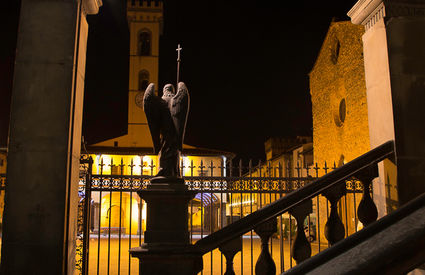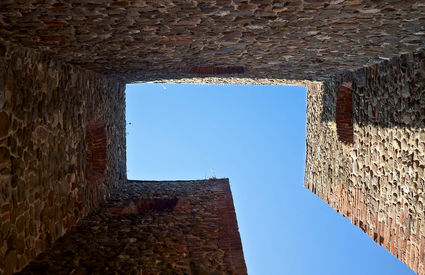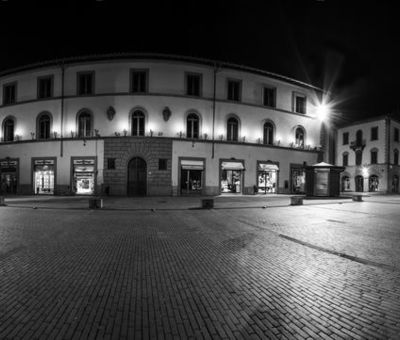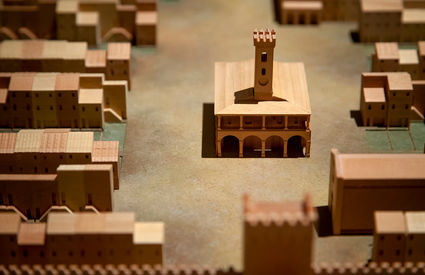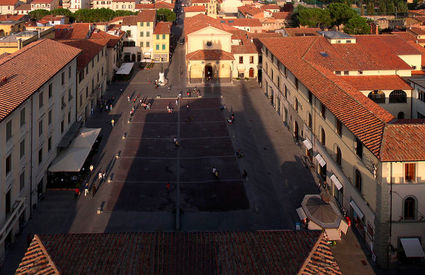Between brush strokes and ball blows
In San Giovanni Valdarno, I have an affinity for the super-central piazza Masaccio, with the Palazzo di Arnolfo sobering up all those who pass by it. Cited in Vasari’s work, the structure has an elegant portal and, on its façade, more than 250 different coats of arms – if you look at them from a distance, they seem like a proud general waving his medals as he tells and retells his stories of war time.
However, looking closely at the town’s great views through tinted glasses, with a net of superficial gestures, I can’t not reflect on the fact that it was right there that I realized I’m quite a mediocre penalty kicker, a decent cross kicker – enough to terrify those passing by – and on those very bricks I glimpsed Andreotti walking with vigor: fun fact, despite what all the little anecdotes say, he was a rather tall guy. Enchanted, I suddenly got a second taste of my passion for the local 18th century architecture (I’ve always said that the palazzi dating back to that period can only be lived in by folks of a certain moral fibre), not to mention the well-cared for waterfront toward the stadium. Inside the basilica’s museum, Beato Angelico’s splendid Annunciation catches my attention, and I have to remember to mention it in the piece, perhaps at the expense of the 33 goals of Ciccio Baiana with the Sangiovannese, from 2002 to 2008: I think I can do it.


